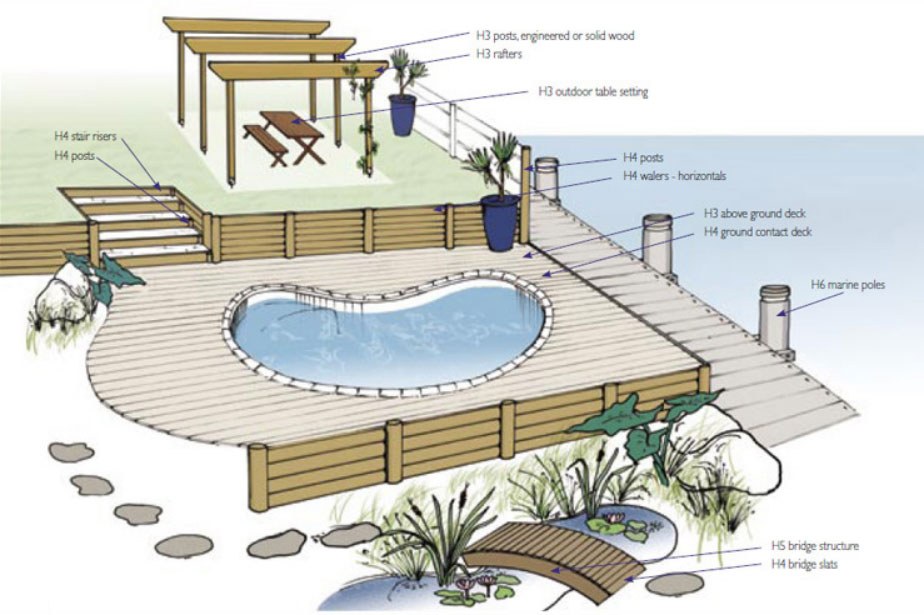
For high human contact applications such as children's play equipment, garden furniture, picnic tables, exterior seating and domestic patio, decking and handrails, Arch recommends Ecowood (Tanalised® E) and Clear H3 (Tanalised® V). These alternative treatments are approved by the Australian Pesticides and Veterinary Medicine Authority for the above uses. Tanalised® C is being phased out for high human contact applications.
The Australian Pesticides & Veterinary Medicines Authority have directed that from March 2006, CCA (Tanalised® C) is not to be used for the treatment of wood products intended for applications such as children's play equipment, garden furniture, picnic tables, exterior seating and domestic patio, decking and handrails where frequent and direct human contact is expected. Arch recommends that Ecowood (Tanalised® E) and Clear H3 (Tanalised®V) are suitable alternatives for these situations.
| Hazard Level | Service Condition | Biological Hazards or Pests | Typical Applications | Products |
|---|---|---|---|---|
| H3 | Above ground, outside, exposed to weather & dampness | Fungal decay, termites & borers | Decking, fence pickets & rails, pergolas, exposed bearers, cladding | Tanalith Oxide Tanalith E |
| H4 | In ground or ground contact, outside | Fungal decay termites & Borers | Fence posts, sleepers, landscaping, garden edges & boxes | Tanalith Oxide Tanalith E |
| H5 | In ground or ground contact, outside, critical or structural use. | Fungal decay, termites & Borers | Engineered retaining wall, building poles | Tanalith Oxide |
Treated timber is highly versatile. It is used extensivelly both inside and outside houses and commercial buildings, and in landscaping.
Treatment is carried out by impregnation of the timber, under vacuum and pressure, with tanalised preservatives in accordance with Australian Standards.
After treatment and redrying the tanalised preservative becomes substantially part of the cellular structure of the timber. It can not be removed by weathering, rain, wetting, soaking or scrubbing. The treatment can never be washed out.
The preservative chemicals are toxic to insects and fungi, which is, of course, their purpose. Provided that common sense precautions are observed, preservative chemicals do not present a hazard to humans when fixed in the dried timber.
Sometimes a white powder will appear on the surface of the timber. This is mostly Sodium Sulphate, a harmless substance which, if necessary, can be simply brushed or hosed off.